8 Great Tips for Better Urban Landscape Photographs
Landscapes and nature are favorite subjects for many photographers, but if you live in a city or urban area you may not be surrounded by a lot of nature. Urban landscape photography follows many of the same principles as landscape photography, but in a different setting.
If you want to photograph without the need to travel to a park or some other natural area, simply getting out in your city or town should provide plenty of opportunities.
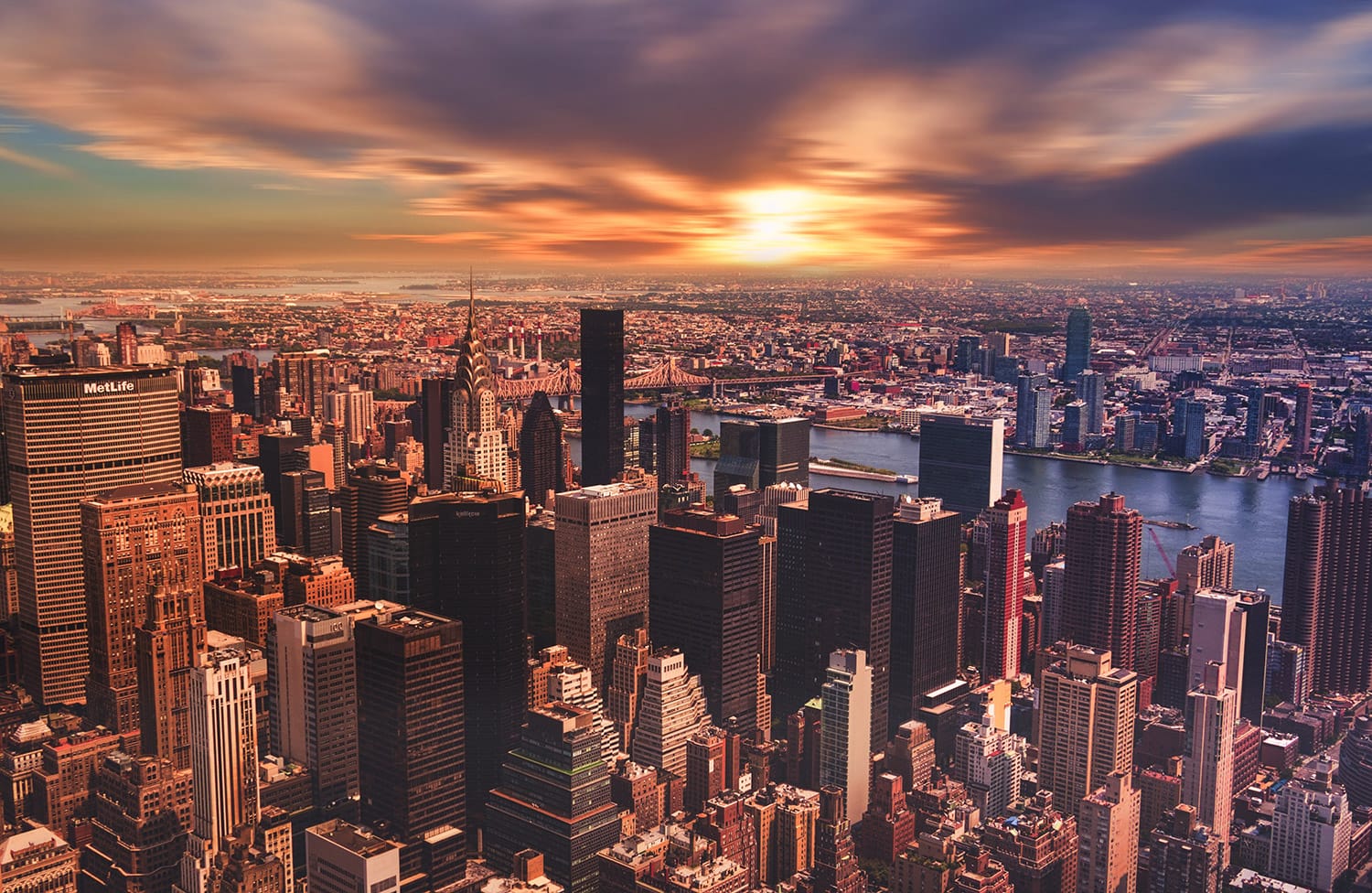
What is Urban Landscape Photography?
The definition of an urban landscape is a little vague, and not everyone will define it the same way. In general, street photography typically showcases people whereas urban landscapes are more about the buildings and other elements aside from people.
Your urban landscape photos may include people, but they are usually not the main focal point. Urban landscapes can showcase buildings, skylines, streets, bridges, as well as smaller details like signs and graffiti.
Here are 8 great tips that can help you to get the best urban landscape photos.
1. Leading Lines Are Your Friends
Using leading lines in your compositions is a good practice with any type of photography, but it can be especially effective with urban landscapes. There are a lot of possibilities including edges of buildings, streets, bridges, railings, fences, sidewalks, walls, and more.
Leading lines, when used effectively, can help to turn a photo from good to great. With lots of lines all around you, the key is to be aware of the possibilities and consciously look for ways to use them in your compositions. Don’t rush, and be sure to take the time to evaluate the scene and find the most interesting compositions.
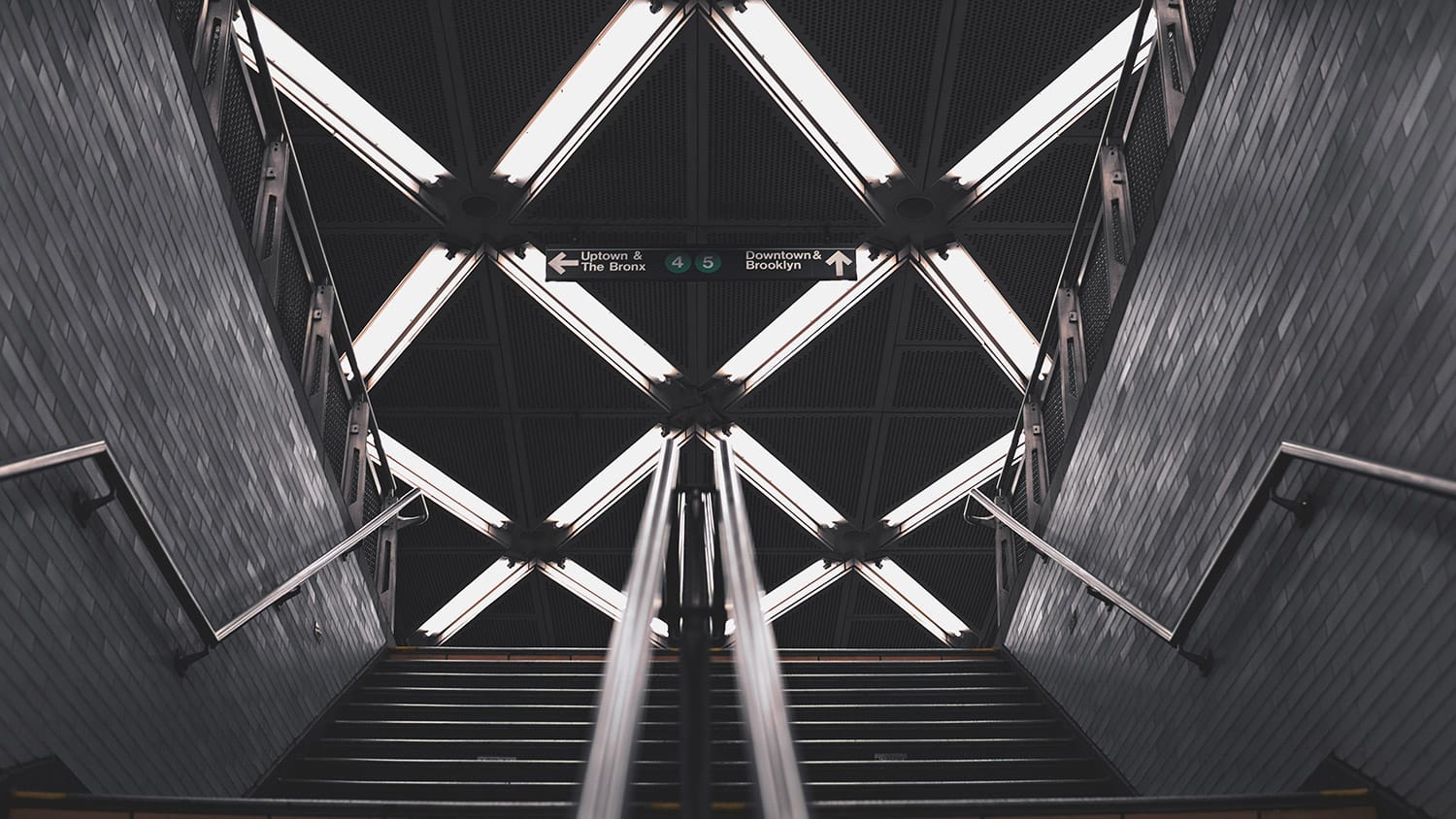
For more, please read How to Use Leading Lines for Exceptional Composition.
2. Follow General Landscape Composition Principles
Although urban landscape photos will look much different than traditional landscape photos, you can follow the same basic principles and rules that you would use if you were photographing a natural landscape. Instead of mountains, trees, and lakes, the elements in your composition might be buildings, streets, and bridges.
You can still follow the rule of thirds, look for foreground interest, create balance, and make use of negative space.
A common approach with landscapes is to use natural elements to create a frame (trees, natural arches, etc.). The photo below takes a similar approach, but uses a fence instead.

For more, please read 10 Must-Know Tips for Composing Landscapes
3. Use Different Angles
One of the best ways to create a photo that is more interesting is to change your angle or perspective. Most urban landscapes will be taken from eye level, but you could also get low to show things in a different and interesting way.
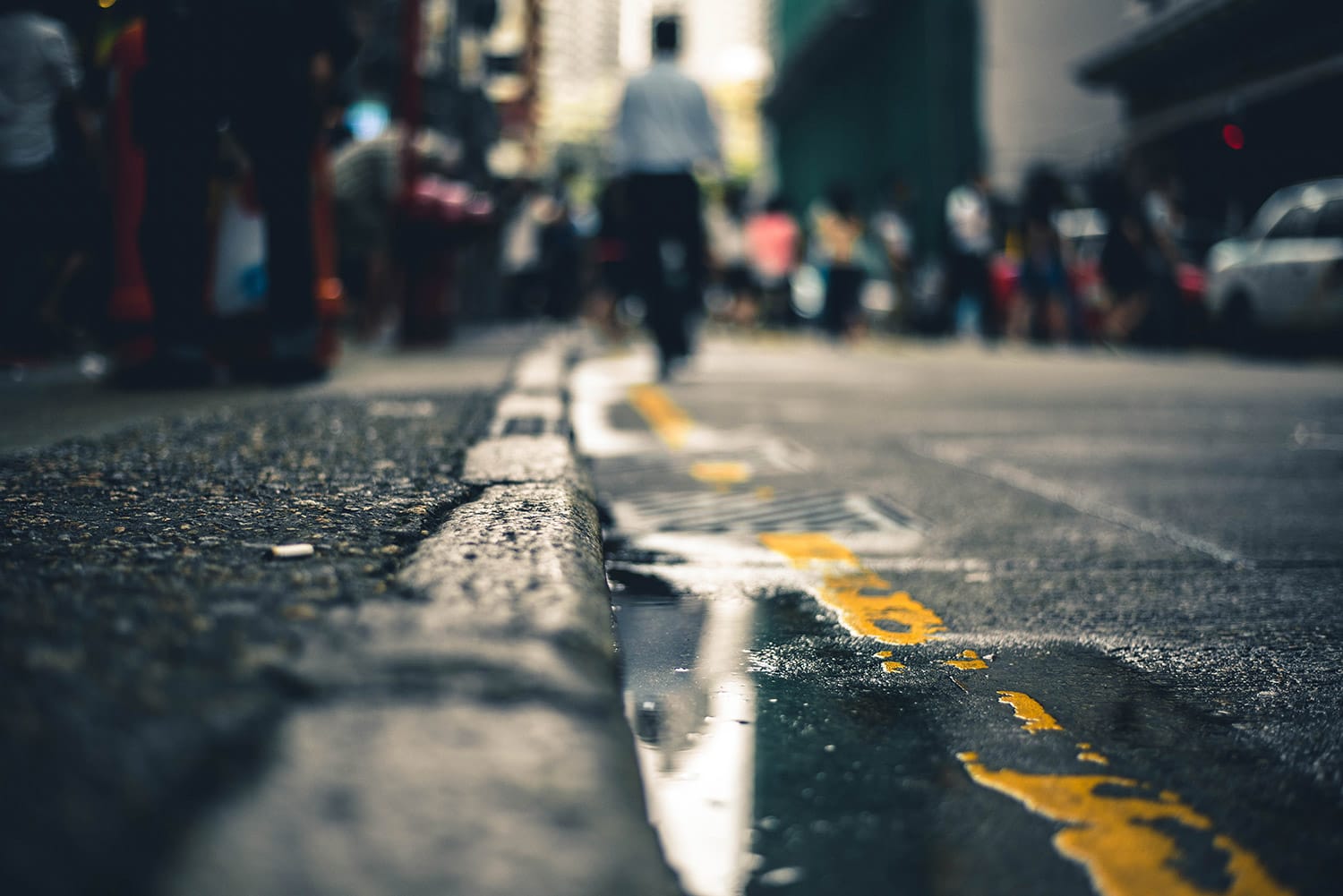
In cities, you’ll often have the opportunity or possibility to get higher. You could photograph from a balcony or deck, a rooftop, an overpass or bridge, or from any type of observation or viewing platform. This is a very effective way to get a different angle and an entirely new perspective that allows you to take beautiful urban landscapes.
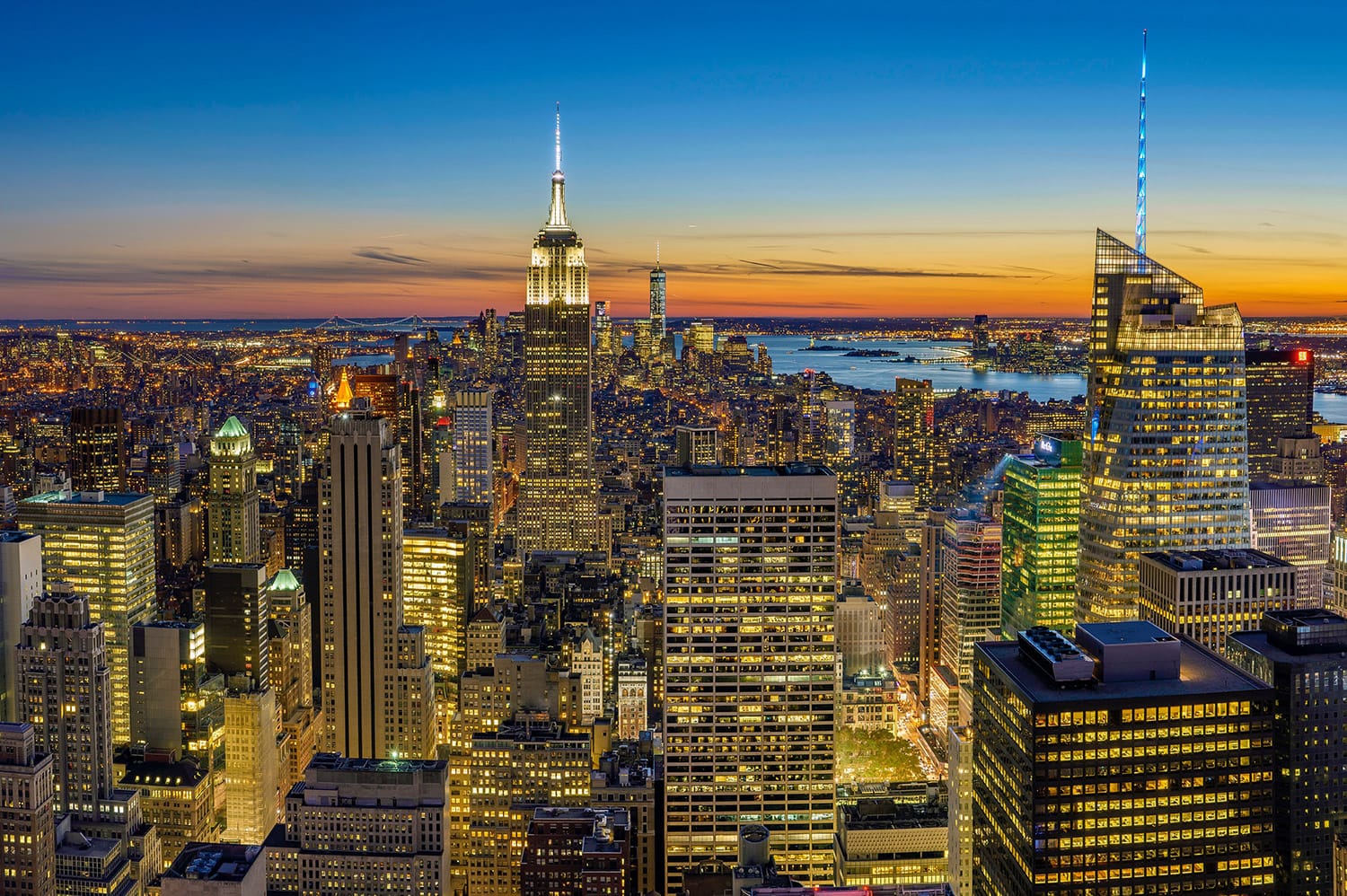
4. Showcase Man-Made Elements and Nature Together
Although man-made elements like buildings will be the centerpiece of your urban landscapes, natural elements can still play an important role. In fact, combining natural and man-made elements is a great way to create something special. Here are a few examples of how you can do this.
Incorporate the sunrise or sunset into your compositions ⬇
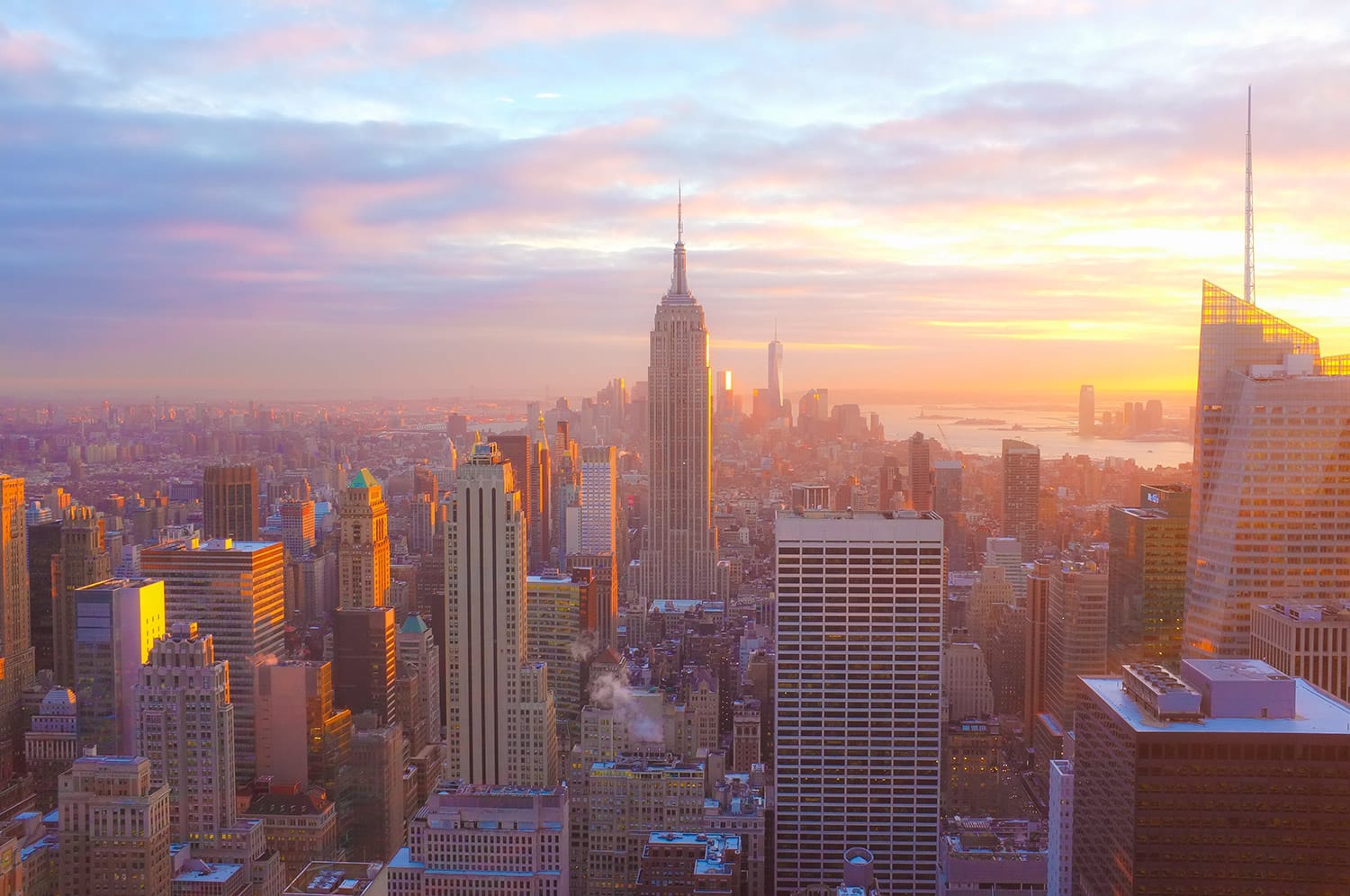
Or, include a river or other body of water ⬇
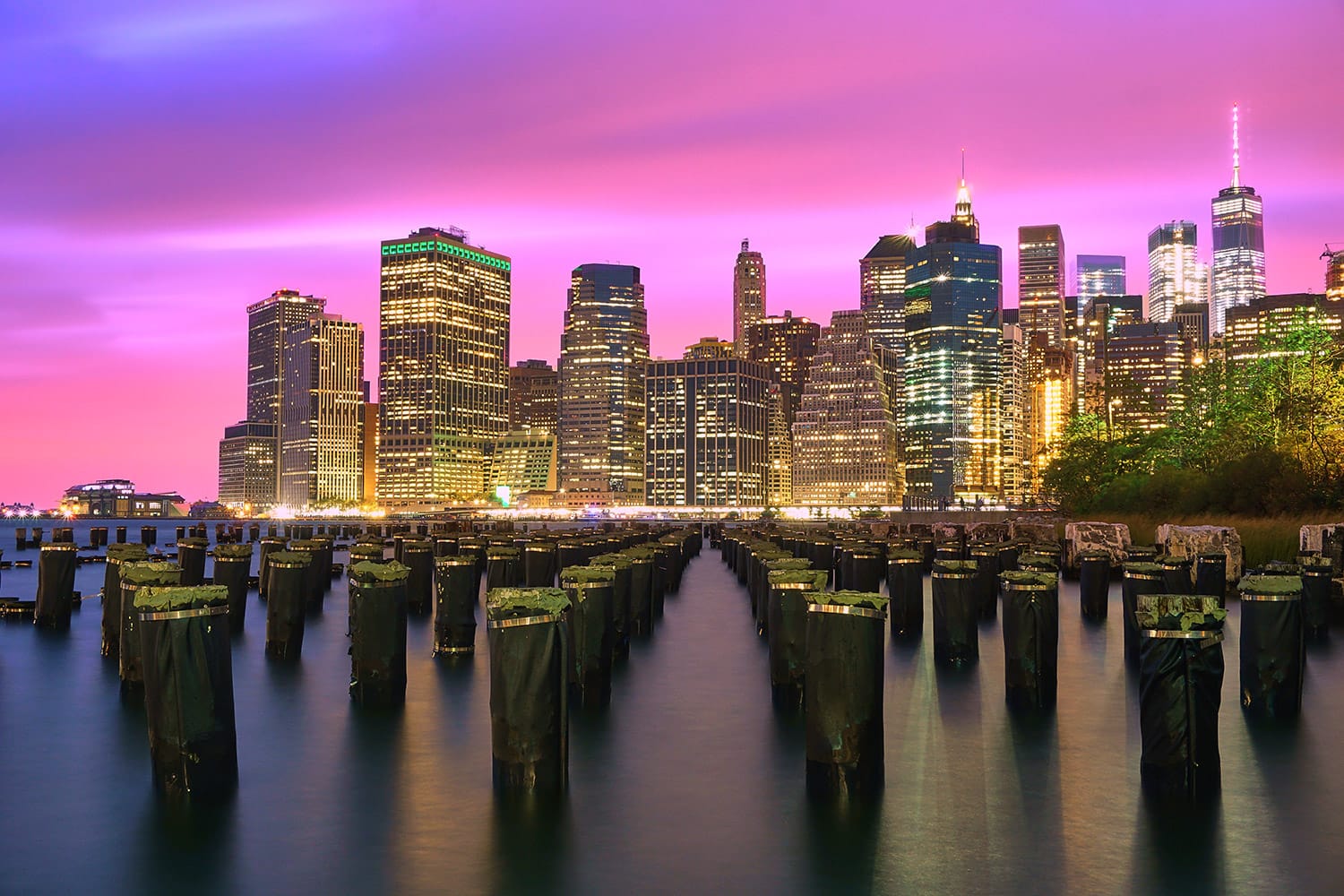
Or even photograph a foggy city ⬇
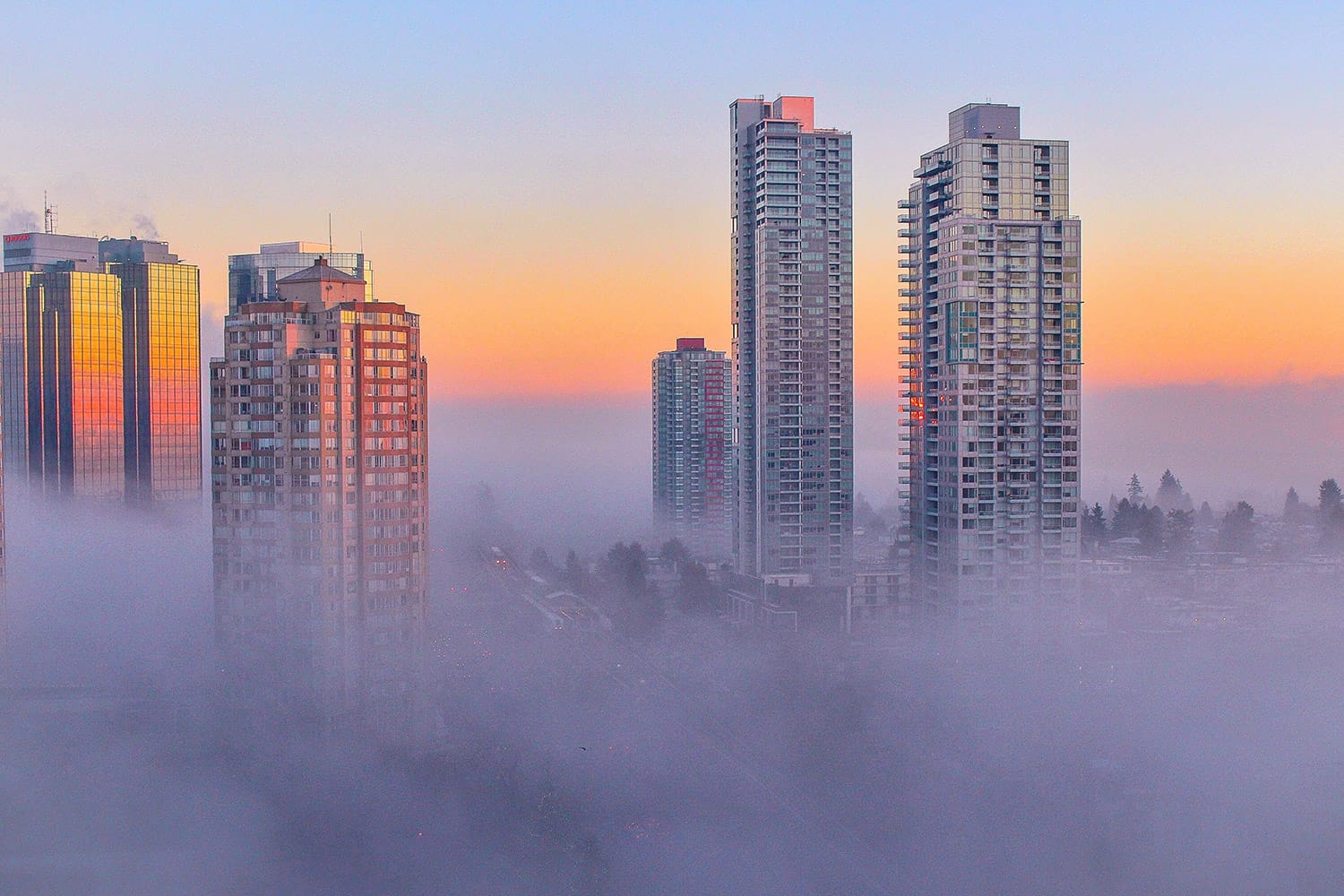
5. Show Movement
A city is a busy place, with all kinds of movement and activity. Cars, buses, people. You can capture the emotion and feeling of a city by incorporating motion into the photos that you take.
You can do this by using long exposures and slow shutter speeds to blur moving cars or showcase light trails ⬇
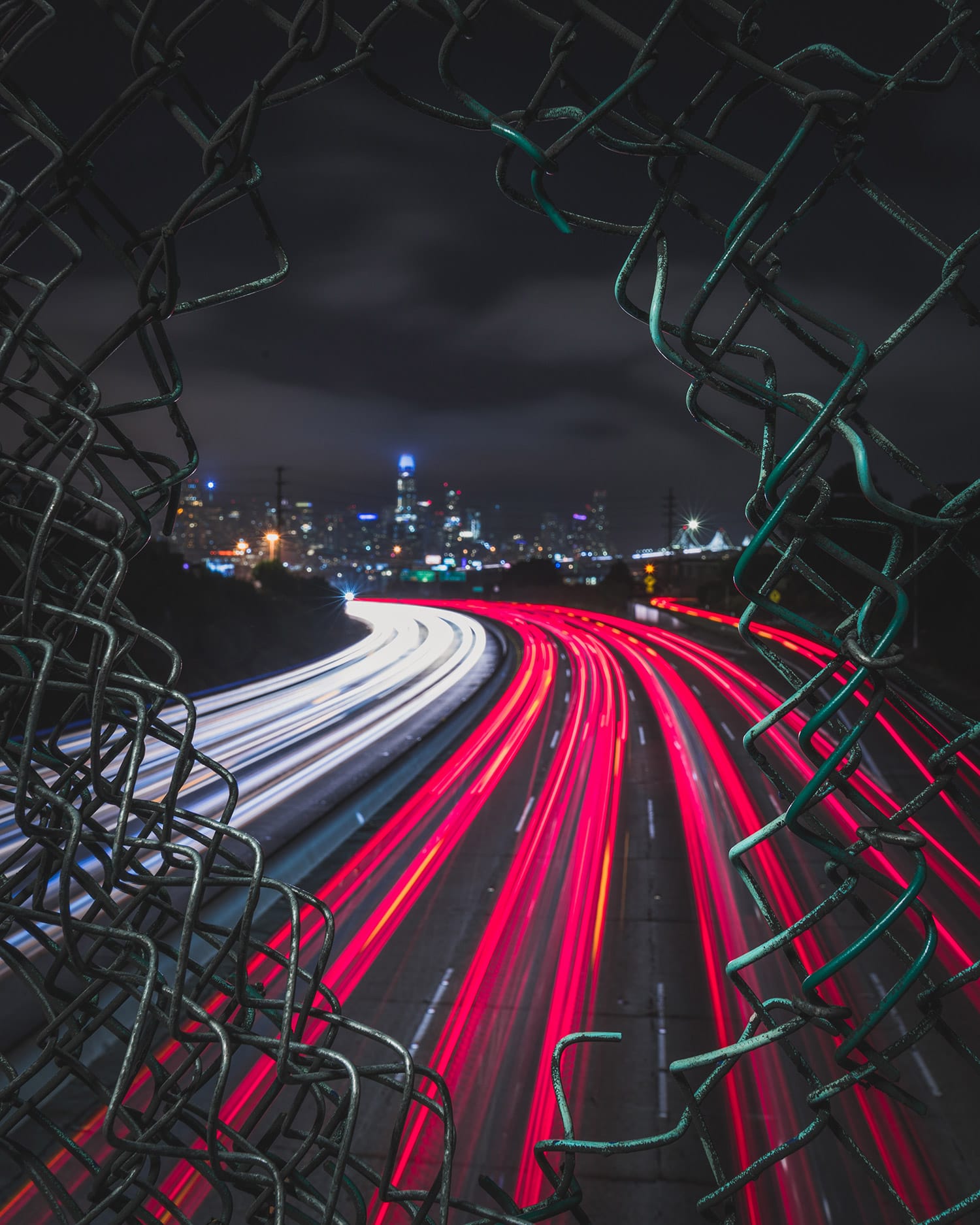
Another option is to reduce the shutter speed to blur people who are walking ⬇
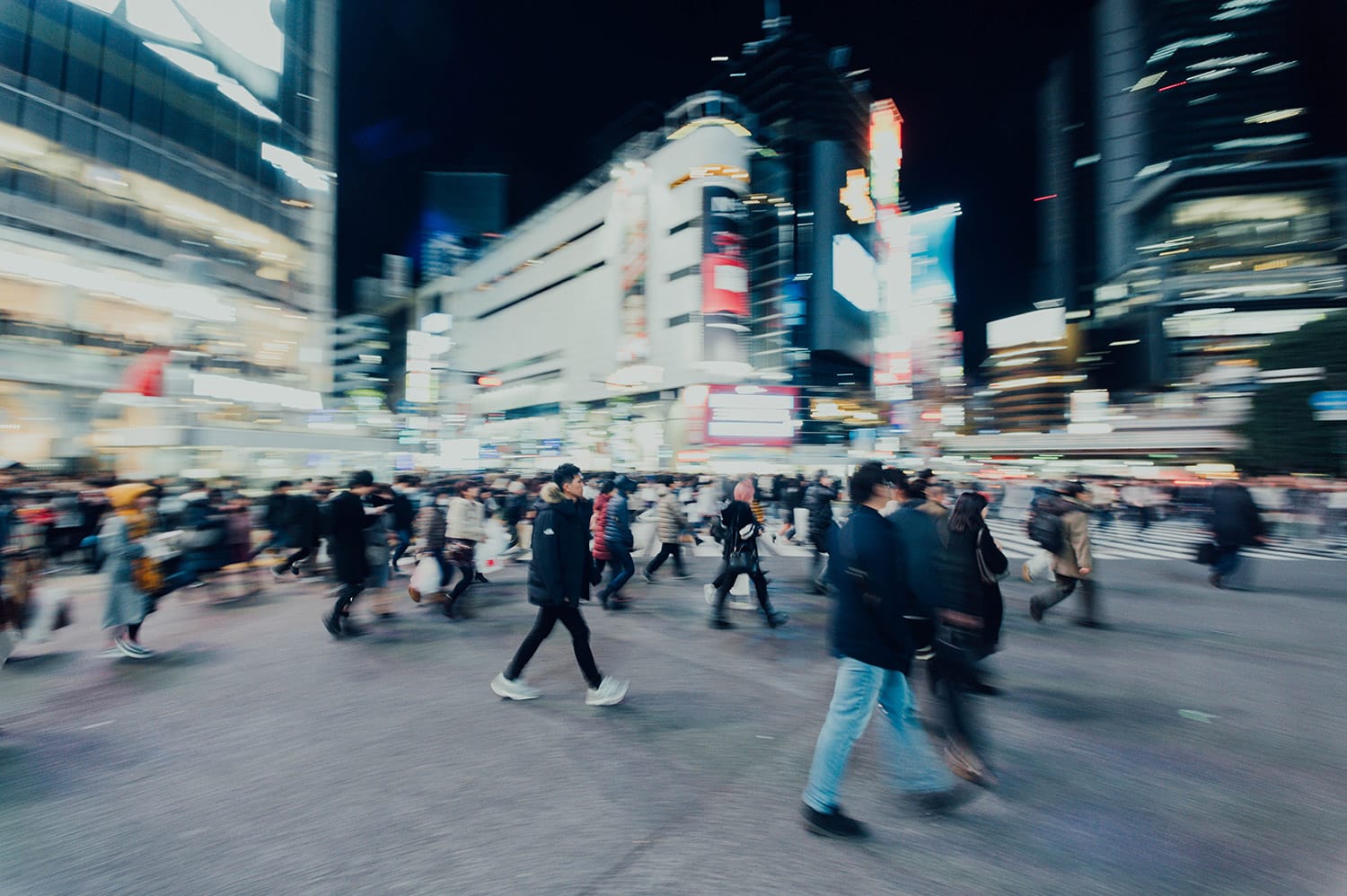
6. Photograph at Night
Night is a great time for photographing urban landscapes, cityscapes, and skylines. The lights of the city can make for beautiful photos.
The process of photograph urban scenes at night won’t be that much different than photographing during the day, but you’ll definitely need a tripod and you’ll need to use slower shutter speeds.
Many cities have particular buildings or attractions that are lit up at night. These provide plenty of opportunities to come away with photos that will be memorable and stand out from the crowd.
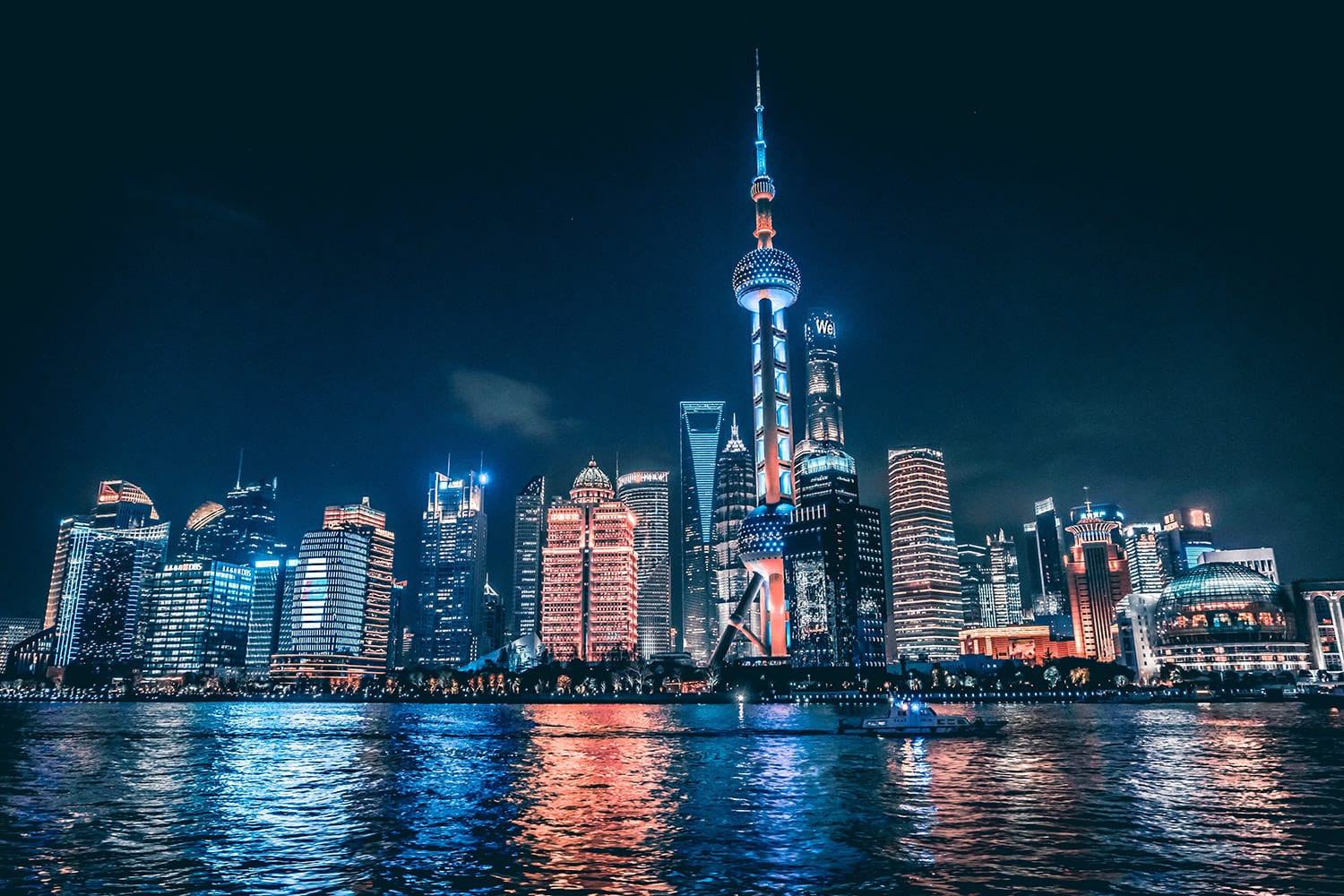
7. Look for Patterns
Patterns exist in nature as well as man-made elements. In nature photography, you might showcase patterns in plants or leaves. In urban photography, you can look for patterns on buildings posts, and more.
Sometimes your photos that feature patterns will be taken up close so that the pattern essentially fills the frame, and other times the pattern may be just a part of a larger scene.
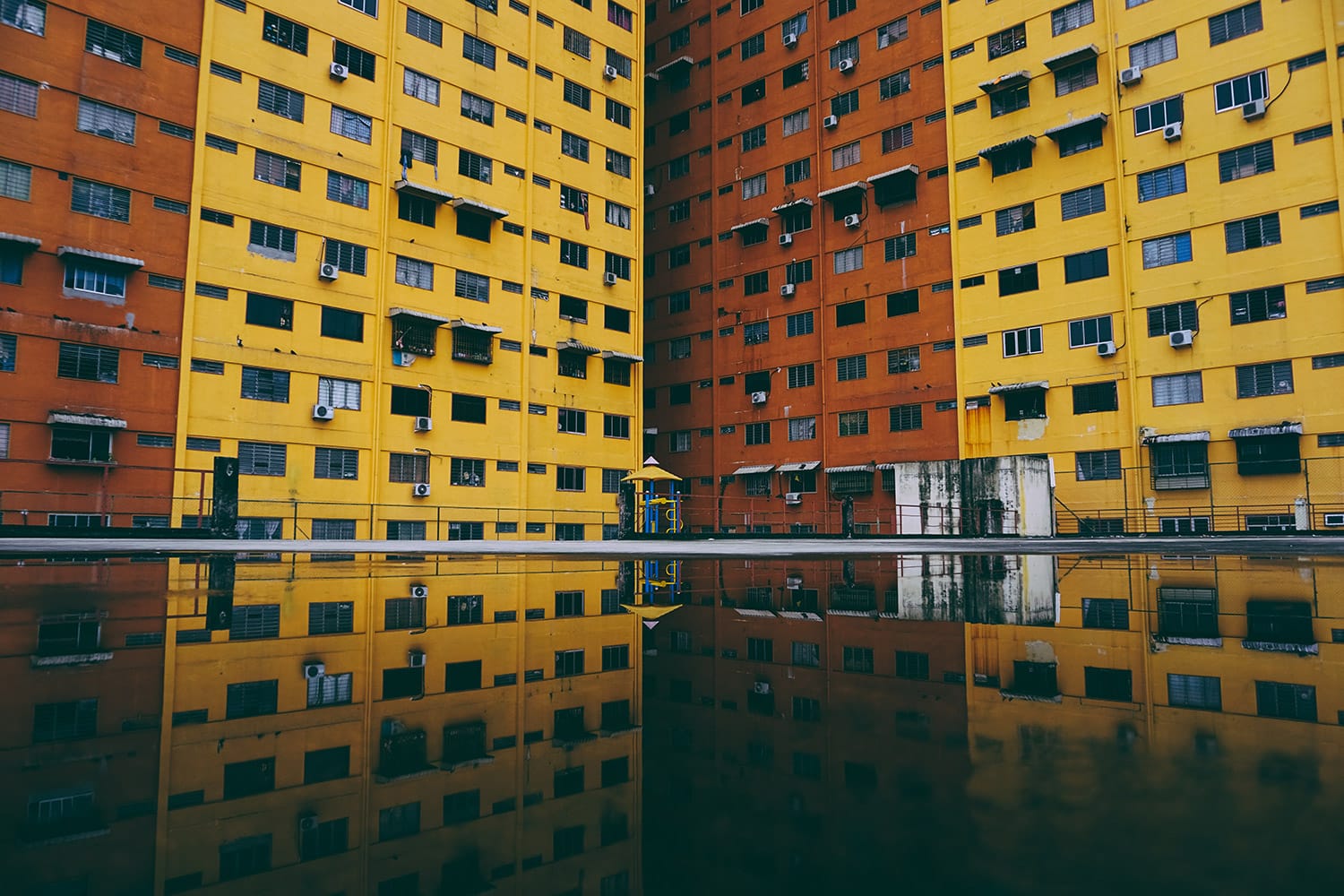
8. Include People
Although people will not be the focal point or main center of attention in your urban landscapes, you don’t need to completely avoid having people in your shots (thankfully, because it can be a challenge to avoid people).
Using people in your compositions can add intrigue and can also help with providing a scale or a reference point. The key is to take the photo when people are in a position that will improve the photo or add something to it, rather than interfering with the main elements of your photo (such as blocking a leading line).
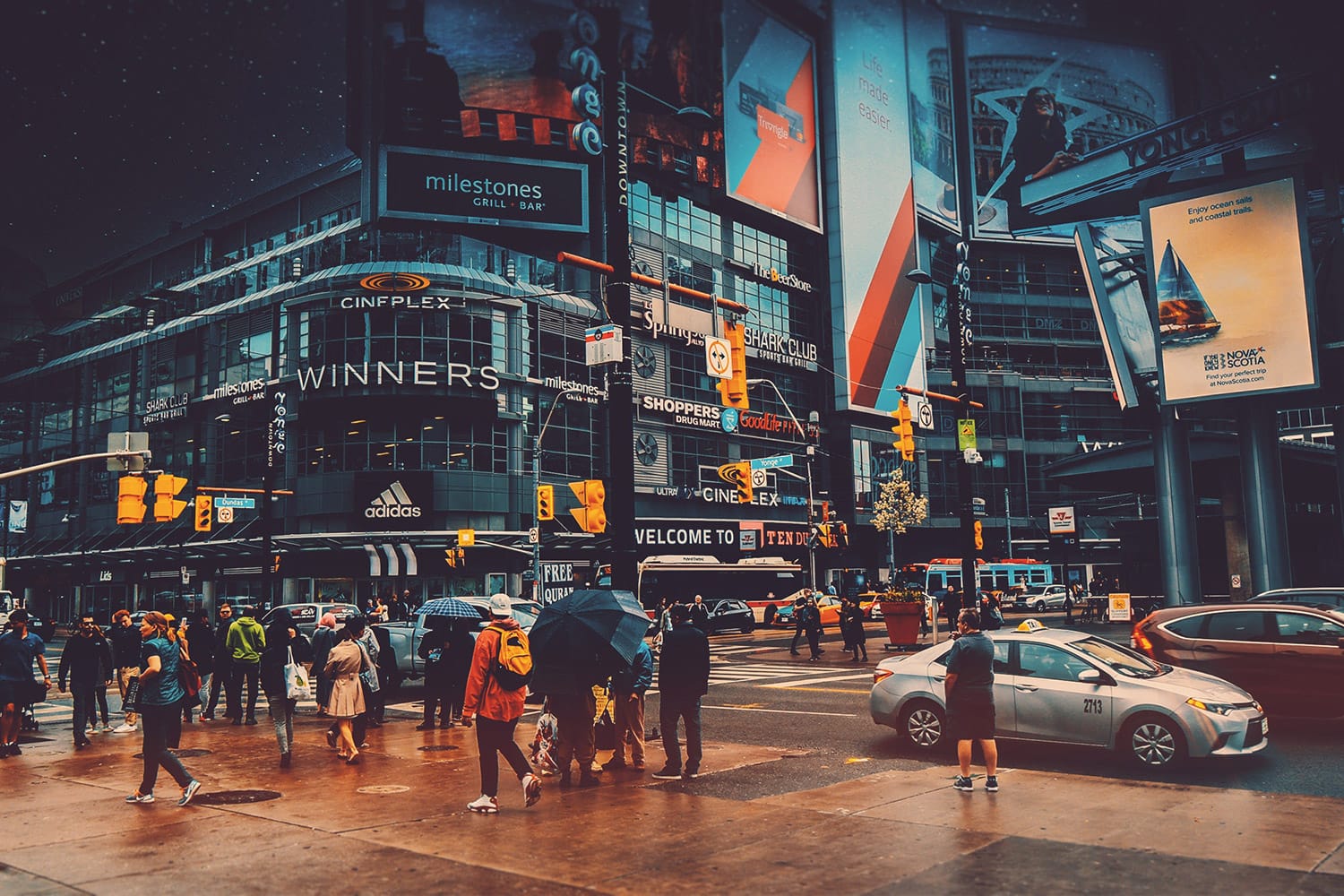
By keeping these tips in mind, you should be able to head out into your own city or town and come away with some beautiful photos. Happy shooting!
